A dirt basement is nothing to be ashamed of. In fact, many homes have them. However, a damp, musty basement is not only unattractive but can also be dangerous.
Molds and mildews can cause respiratory problems, so it’s important to waterproof your dirt basement to prevent these health hazards.
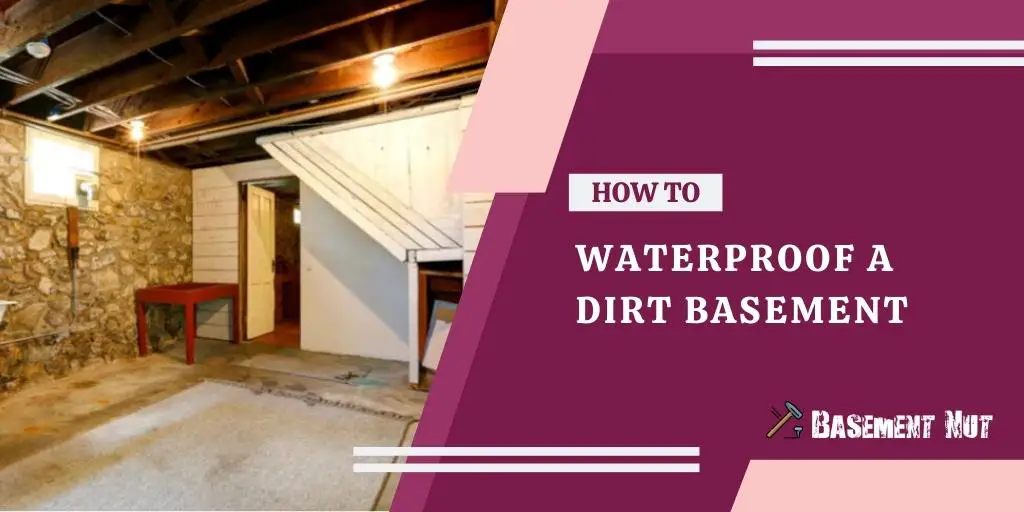
Fortunately, waterproofing a dirt basement is not as difficult as you might think. So keep reading to learn more about how to waterproof a dirt basement.
Why Should You Waterproof a Dirt Basement?
Waterproofing your basement is one of the smartest things you can do to protect your home. A wet basement is not only a breeding ground for mold and mildew but can also lead to serious structural damage.
When water seeps through cracks in the foundation, it can weaken the concrete and even cause the walls to collapse. Waterproofing will help to prevent these problems by creating a barrier between the concrete and the water.
There are several ways to waterproof a basement, but one of the most effective is installing an interior drainage system.
This system will collect water that leaks through the foundation and redirects it to a sump pump, which will then remove the water from the basement. Installing a drainage system is a big job, but keeping your basement dry and your home safe is worth it.
How to Waterproof a Dirt Basement in 6 Easy Steps
Step 1: Identify the Source of the Problem
The first step in waterproofing your dirt basement is to determine the source of the water problem. For example, if your basement is constantly wet, you may have a problem with drainage around your foundation.
In this case, you’ll need to consult with a professional to have the issue corrected. However, suppose your basement only tends to get wet during periods of heavy rainfall.
In that happens, you may be able to solve the problem yourself by installing gutters and downspouts around your home. This will help direct rainwater away from your foundation and keep your basement dry.
Step 2: Waterproof the Interior of the Basement
Once you’ve determined the source of the water problem and corrected it (if necessary), it’s time to start waterproofing the interior of your basement. The best way to do this is to use a concrete sealer.
Simply apply the sealer to the walls and floor of your basement using a paintbrush or roller. Be sure to follow the manufacturer’s instructions carefully and allow the sealer to dry completely before proceeding to the next step.
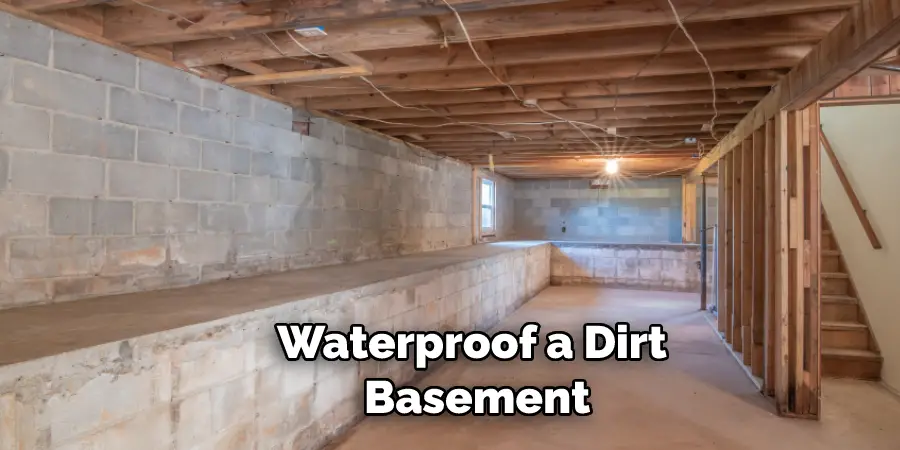
Step 3: Install a Vapor Barrier
The third step in waterproofing your dirt basement is to install a vapor barrier on the walls and floor. A vapor barrier is a thick plastic sheet that helps prevent moisture from seeping through concrete walls and floors.
You can buy vapor barriers at most home improvement stores; simply cut them to size and tape them in place using duct tape or another heavy-duty adhesive. Be sure to seal all cracks and seams with tape as well; this will further prevent moisture from entering your basement.
Step 4: Install a Sump Pump
Another important step in waterproofing your dirt basement is to install a sump pump. A sump pump is a device that helps remove water from your basement by pumping it out through a hose or pipe.
This is an especially important step if you live in an area that experiences regular flooding; a sump pump will help keep your basement dry even during periods of heavy rain.
Step 5: Finish Waterproofing the Exterior of the Basement
Once you’ve waterproofed the interior of your basement, it’s time to finish waterproofing the exterior. This can be done by adding drainage tiles around the perimeter of your foundation and installing gutters and downspouts to direct rainwater away from your home.
You may also want to consider adding a French drain, which is a type of drainage system that helps collect and redirect water runoff.
Step 6: Maintenance
Once you’ve completed all the steps above, it’s important to perform regular maintenance to ensure that your basement stays dry. This includes regularly cleaning your gutters and downspouts and checking the seals around your windows and doors.
You should also have your sump pump checked regularly to ensure that it’s working properly. By taking these simple steps, you can help keep your basement dry and prevent future water problems.
That’s it! You’ve now learned how to waterproof a dirt basement in six easy steps. By following these steps, you can help keep your basement dry and prevent costly water damage.
What You Need to Know Before Waterproofing Your Dirt Basement?
Most homes have a basement, many of which are made with concrete. Unfortunately, concrete is not waterproof. Over time, water can seep through cracks in the foundation and cause serious damage to your home. If you have a dirt basement, you may wonder if you need to waterproof it.
The answer is yes! Waterproofing your dirt basement will help to prevent moisture from causing mold and mildew growth, as well as preventing wood rot and insect infestation.
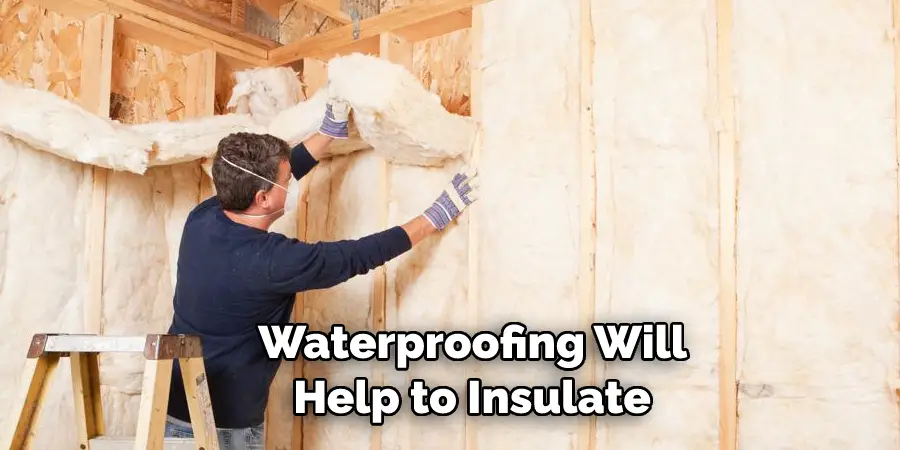
In addition, waterproofing will help to insulate your basement and keep it cooler in the summer and warmer in the winter. There are a few different ways to waterproof your dirt basement.
For example, you can use a sealant on the walls and floors or install a sump pump to remove the water before it can damage your home. Whichever method you choose, waterproofing your basement is an essential step in protecting your home from water damage.
How Do I Prevent Water From Seeping Into My Dirt Basement?
Water seeping into your dirt basement can be a major problem. Not only can it damage your belongings, but it can also lead to mold and mildew growth. However, you can do a few things to help prevent water from seeping into your basement.
First, make sure that your gutters and downspouts are clear of debris. This will allow water to flow away from your foundation. Second, consider installing a sump pump.
This will pump water out of your basement before it has a chance to cause any damage. Finally, make sure that you seal any cracks in your foundation.
By following these simple tips, you can help keep your basement dry and free of water damage. Keep reading for more information about how to waterproof a dirt basement.
How to Make Sure Your Dirt Basement Is Watertight?
You need to do a few key things to ensure your dirt basement is watertight. First, make sure the walls and floors are sloped so that water will drain away from the foundation. Second, install a sump pump to remove any water that does get into the basement.
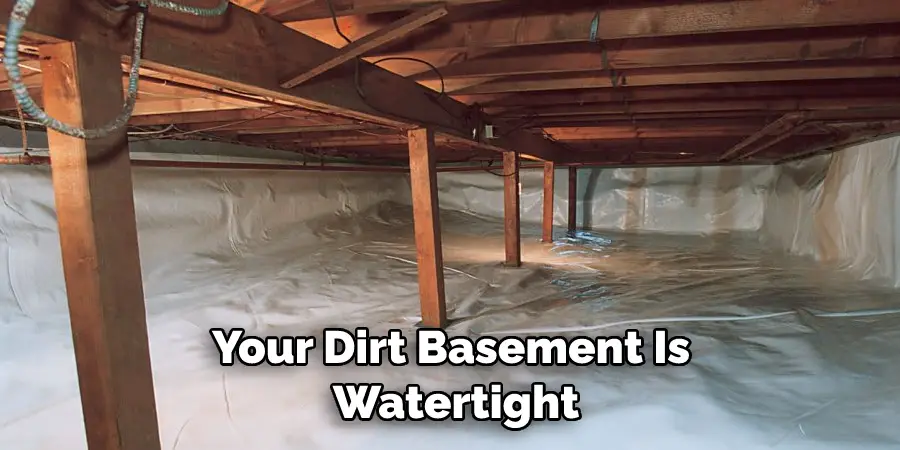
Third, seal any cracks in the foundation or walls with hydraulic cement. Finally, use a waterproofing spray or coating on the walls and floors to help keep water out. By taking these steps, you can help keep your basement dry and free of water damage.
You can check it out to Finish a Basement Bathroom with Rough-In Plumbing
What Kind of Drainage System Should You Put in Your Dirt Basement?
There are many factors to consider when it comes to basement waterproofing. One important factor is drainage. Without a proper drainage system, water can seep into your basement and cause many problems.
There are two main types of drainage systems: interior and exterior. Interior drainage systems are installed inside your basement walls and collect water that has seeped through the walls. Exterior drainage systems are installed outside of your basement walls and collect water before it can seep into the walls.
So, which type of system is right for you? It depends on several factors, including the climate in your area, the soil type in your yard, and the severity of your waterproofing problem.
If you’re unsure which system is right for you, we recommend consulting with a professional waterproofing contractor. They can assess your specific situation and recommend the best solution for your needs.
How Often Should You Check for Moisture in Your Dirt Basement?
Checking for moisture in your basement should be a part of your routine maintenance to help prevent any future flooding or leaks. At a minimum, you should check for moisture once a month, but checking more often is always better.
The best way to check for the moisture is to use a moisture meter. Moisture meters are available at most hardware stores and are relatively inexpensive.
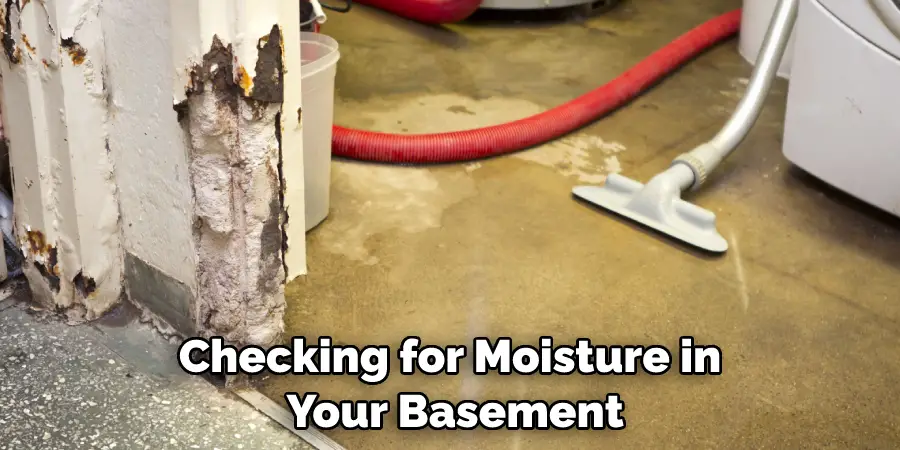
To use one, simply insert the probes into the soil and wait for the reading. The reading will tell you how much moisture is in the soil. If the reading is above 20%, you should reduce the moisture content in your basement.
There are a few ways to do this, such as using a dehumidifier or opening up windows and doors to let air circulate. By checking for moisture regularly and taking steps to reduce it, you can help prevent flooding and leaks in your basement.
Conclusion
Waterproofing your dirt basement may seem daunting, but it’s not that difficult if you know what you’re doing.
By following these simple steps, you can easily transform your damp basement into a dry, comfortable space that you can enjoy for years to come. Thanks for reading our post about how to waterproof a dirt basement.
You can check it out to Block Vents in Basement
